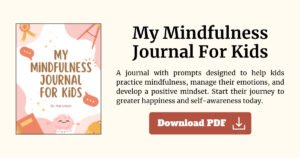A Key to Becoming a Successful Mindfulness and Meditation Teacher
 According to the Educare International Journal for Educational Studies, one of the crucial elements that people should explore and cultivate is happiness. In various professions, the teacher is the one to produce joy.
According to the Educare International Journal for Educational Studies, one of the crucial elements that people should explore and cultivate is happiness. In various professions, the teacher is the one to produce joy.
Teaching is one of the most important professions in today’s society. In many countries, schooling is highly paid for due to the importance of education to a nation’s progress. However, this also makes teaching a demanding profession that requires self-discipline and a high skill level. To be a successful teacher, one must have excellent teaching skills and character traits. They must have compassion for their students while also maintaining high academic standards to succeed in life.
Researchers have studied how teachers can improve performance and have found that they can do so by adopting a mindful approach to teaching. This approach involves a mental stance of non-judgment, noon-stereotyping, and non-reactivity toward students and their parents. A cognitive perspective is where a person’s mind focuses on something without emotional judgment reactivity towards it. With a clear sense, the teacher’s role is to enhance the learning experience for their students by creating an effective lesson plan and encouraging proper classroom management techniques. This approach will improve the teacher’s performance and that of their students.
Before you continue you might like to consider our free worksheet on exploring “My Mindfulness Journal for Kids”. Please download this worksheet here.
In this article:
Effective ways to adopt a mindful approach to teaching
How to become a mindfulness and meditation teacher?
What makes a successful mindfulness and meditation teacher?
Effective ways to adopt a mindful approach to teaching
Be mindful when teaching, especially if you want to become a successful meditation teacher. It means being present and paying attention to what students say, do, and feel. When you are aware, you can help students learn more effectively. Additionally, being mindful can help reduce stress levels in the classroom. Finally, being mindful can lead to a deeper understanding of yourself and your students.
Here are some effective ways to adopt a mindful approach to teaching:
- Take time each day to focus on your thoughts and feelings. It will help you to be present in the classroom.
- Avoid jargon or using too many words your students
may not understand when teaching. Instead, try to use simple language that everyone can understand. - When dealing with difficult situations in the classroom, take a minute to collect yourself before speaking. It will help you reduce stress
levels and improve your ability to think clearly. - Whenever responding possible, this will help you find you think more clearly and react in a way that is respectful to your students
- When answering students’ questions, be sure to take time to explain what you are doing. It will help students understand the material and build skills for future learning.
Finally, be aware of your body and how it reacts to the classroom environment. In addition, being mindful will lead to better student learning and reduced stress levels in the classroom.
How to become a mindfulness and meditation teacher?
Becoming a mindfulness and meditation teacher can be a rewarding and fulfilling way to help others learn about experiences and the benefits of these practices. There are a few things to remember if you want to become a mindfulness and meditation teacher. First, it is essential to have a firm grounding in both mindfulness and meditation practices. An excellent way to learn more about these concepts is to attend a meditation retreat, take an online course that includes practicing mindfulness regularly, reading about and learning mindfulness techniques, and attending mindfulness training for teachers and workshops so we can cultivate a more compassionate and compassionate reflective society. Second, being passionate about helping others learn and experience the benefits of mindfulness and meditation is essential. It can be conveyed through your teaching style and by providing support activities and materials, such as online resources, group work, and other related activities. Finally, it is important to be well-educated and knowledgeable about the mindfulness and meditation field. It means being familiar with the latest research and teaching practices, and you’ll learn this along the way as you enroll in the online course.
What makes a successful mindfulness and meditation teacher?
Mindfulness has seen much growth over the years and was mainly practiced by individuals who want to be part of it. And some things that could make a successful mindfulness teacher include:
- Must have empathy, deep understanding, and practice
- They should be able to create an environment where students feel comfortable sharing their experiences and thoughts
- Know how to cultivate a sense of community among students and others.
Whatever your goal, it is essential to remember that becoming a mindfulness teacher is an ongoing journey that requires dedication and patience. You can become a successful meditation teacher who helps students learn and grow from mindfulness practice with hard work and commitment. So don’t hesitate to start your journey today!
If you’re ready to start your journey as a mindfulness and meditation teacher, download our free workbook here to deepen your practice and enhance your teaching skills.









